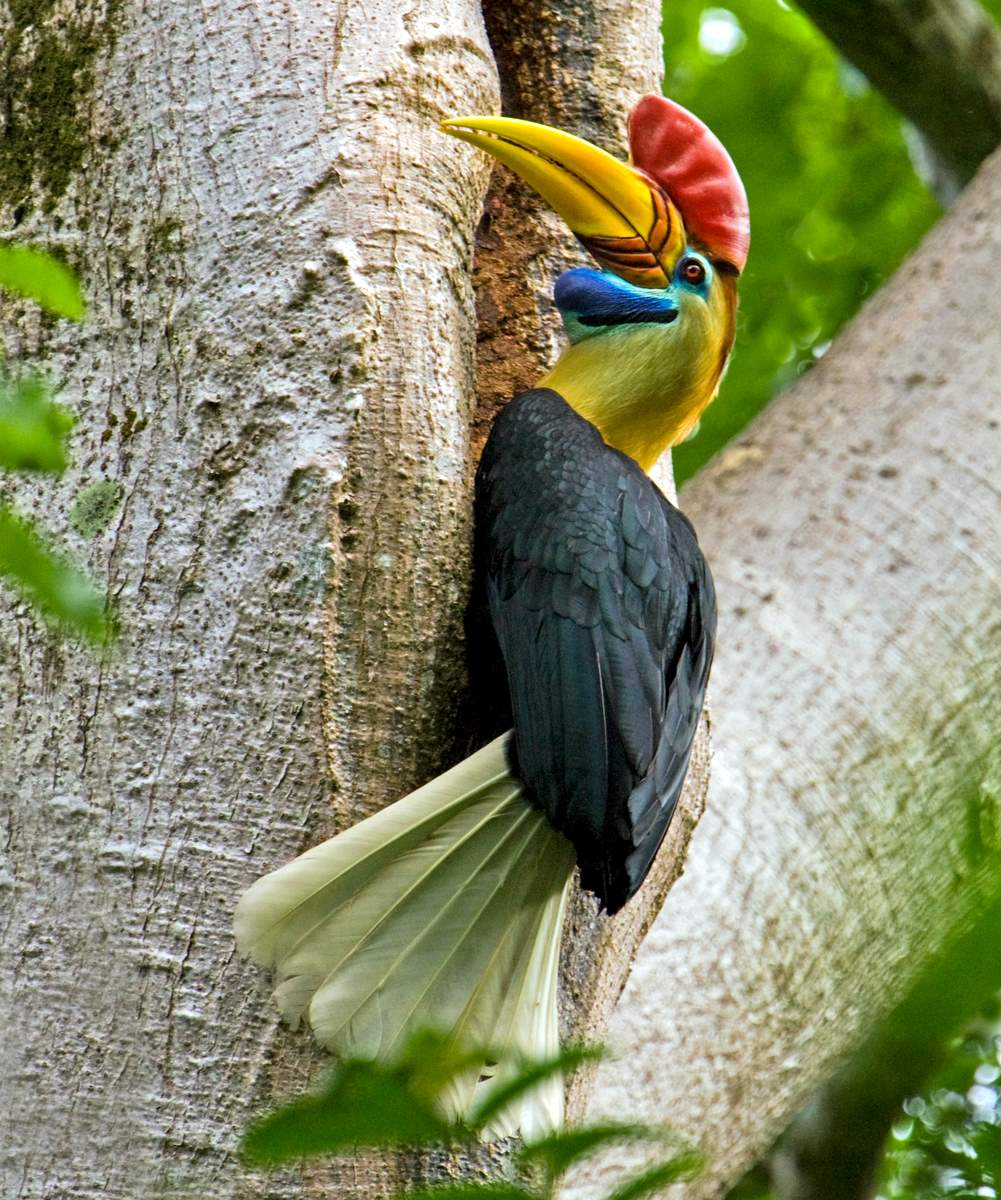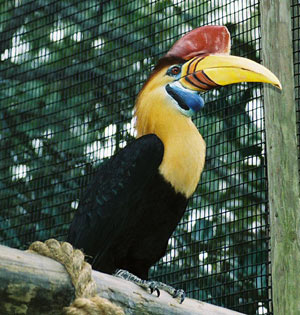
Aceros cassidix
SUBFAMILY
Bucerotinae
TAXONOMY
Buceros cassidix Temminck, 1823, Sulawesi. Sometimes classified
as Rhyticeros cassidix. Monotypic.
OTHER COMMON NAMES
English: Red-knobbed hornbill, knobbed hornbill, island hornbill,
Celebes hornbill, Sulawesi wrinkled hornbill; French:
Calao а cimier; German: Helmhornvogel; Spanish: Cбlao
grande de Cйlebes.
PHYSICAL CHARACTERISTICS
27.6–31.5 in (70-80 cm); female weight unknown, male 5.2–5.5
lb (2.36–2.5 kg). Black with white tail; high wrinkled casque is
red; neck is rufous (male) or black (female); ridged yellow beak
with blue throat skin.
DISTRIBUTION
Indonesian island of Sulawesi and neighboring islands of Lembeh,
Togian, Muna, and Buton.
HABITAT
Prefers primary lowland rainforest below 3,600 ft (1,100 m) altitude.
BEHAVIOR
Wide-ranging, non-territorial bird. Usually seen in pairs and
observed in large numbers at fruiting figs, rarely up to 120 individuals.
Emits loud barking calls that can be heard more than
1.2 mi (2 km) away. High mobility and reliance on fruit makes
these hornbills critical agents of seed dispersal and forest regeneration.
FEEDING ECOLOGY AND DIET
One of the most frugivorous hornbills with a diet of up to
90% fruit comprised of more than 60 species during a year.
Forage primarily in the top of the canopy.
REPRODUCTIVE BIOLOGY
Nests in high densities of up to 10 pairs/km2 beginning
June/July at end of rainy season, so fledging is timed with
fruiting peak. Lays two to three eggs; incubation 32–35 days
and nestling period c. 100 days resulting in nesting cycle of c.
139 days. Female emergence highly variable, ranging from 58
to 140 days but generally before chick. Only one chick fledges
but nesting success high at an average of 80%.
CONSERVATION STATUS
Not threatened. Locally common attaining densities of 130
birds/mi2 (51 birds/km2) in Tangkoko Nature Reserve, North
Sulawesi—the highest density ever recorded for a forest hornbill.
DISTRIBUTION
, however, becoming restricted and patchy due
to massive deforestation.
SIGNIFICANCE TO HUMANS
Feathers and casques, believed to impart power and insure invincibility,
are used to decorate headdresses and drums for the
Cakalele, a traditional warrior’s dance. Less frequently, heads
are hung in rafters to bring power to the homes and protect
against evil spirits. Meat also eaten.
Other popular Animals
Photo Gallery of - Sulawesi red-knobbed hornbill




 Animalia Life
Animalia Life